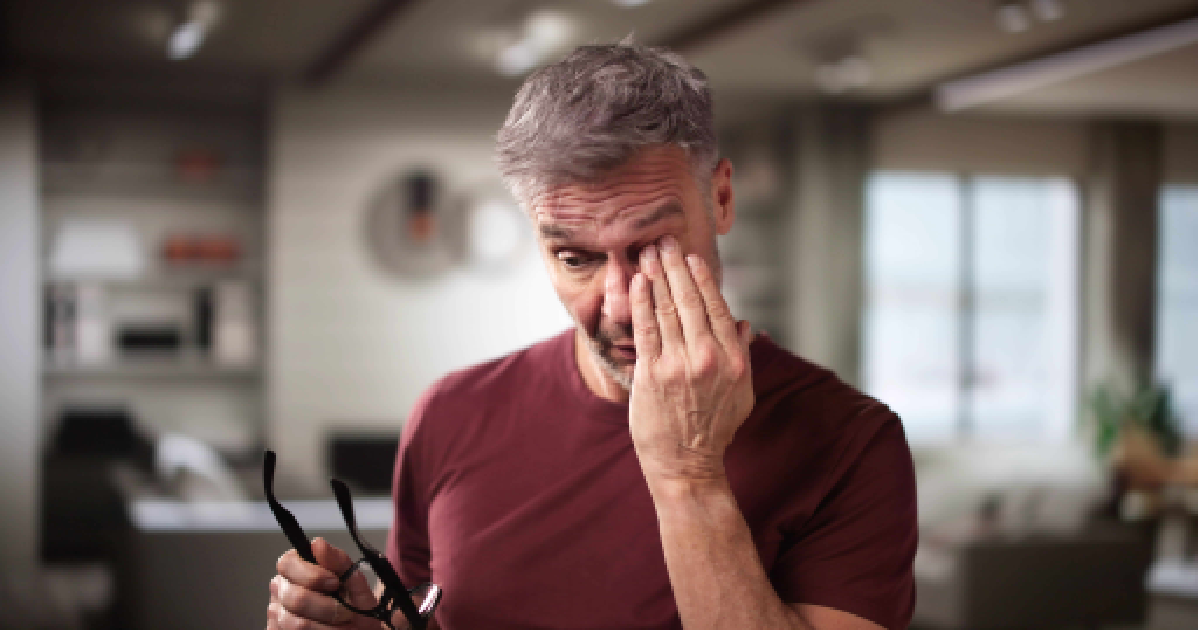Table of Contents
If you’ve ever noticed a child squinting one eye, struggling to focus on nearby objects, or losing their place while reading, there’s a chance the problem isn’t poor eyesight; it’s how their eyes work together. Two common conditions that often cause these challenges are lazy eye (amblyopia) and strabismus (a condition where the eyes turn in or out). Both can affect not only a person’s vision but also their confidence, learning, and daily comfort.
For parents and adults searching for a solution that goes beyond glasses or surgery, vision therapy has emerged as a practical, non-invasive approach. At Rosley Eyecare, patients benefit from customized therapy programs that retrain the eyes and brain to communicate effectively, addressing the root cause of visual dysfunction rather than just its symptoms.
Understanding Lazy Eye and Strabismus
Before exploring how vision therapy works, it is helpful to understand what these two conditions entail and the underlying causes of their occurrence.
Lazy eye (amblyopia) happens when one eye develops weaker vision than the other, often because the brain starts favoring the stronger eye. This imbalance prevents both eyes from working together correctly, and over time, the weaker eye’s visual pathways may cease to develop.
Strabismus, on the other hand, occurs when the eyes are misaligned; one might turn inward, outward, upward, or downward. While this can sometimes be visible, it may only appear when a person is tired or focusing on something close. Because the brain receives two different images, it may suppress one to avoid double vision, which can lead to or worsen amblyopia.
How Vision Therapy Works
Vision therapy is often described as physical therapy for the eyes and brain. Instead of relying on surgery or medication, it uses a series of structured visual exercises to strengthen coordination, depth perception, tracking, and focus.
At Rosley Eyecare, the process begins with a comprehensive eye examination to assess how well the eyes move, focus, and work together as a unit. Based on this evaluation, the optometrist designs a personalized treatment plan that includes both in-office sessions and at-home exercises.
During therapy, patients may engage in activities that involve:
- Eye tracking and focusing tasks, such as following moving targets or shifting focus between near and far objects.
- Binocular vision exercises, welp, both eyes work together to form a single, clear image.
- Computer-based programs that use real-time feedback to train the visual system.
- Balance and coordination activities that strengthen the connection between visual input and body movement.
Over time, these exercises help rewire neural pathways, enabling the brain to learn to use both eyes together and improve alignment, coordination, and overall visual performance.
Vision Therapy for Lazy Eye (Amblyopia)
Traditionally, lazy eye was treated by patching the stronger eye to force the weaker one to work harder. While this can sometimes improve vision in the weaker eye, it doesn’t always solve the underlying issue: the two eyes still struggle to work together.
Vision therapy takes a more comprehensive approach to addressing visual issues. Instead of isolating one eye, it encourages binocular cooperation, teaching both eyes to function as a team. This is essential because normal vision depends on the brain integrating information from both eyes simultaneously.
Some common exercises for lazy eye include:
- Near-far focusing tasks that challenge depth perception.
- Stereogram and 3D training that enhance spatial awareness.
- Digital vision games are designed to stimulate visual engagement in both eyes.
With consistent therapy, many children and adults with amblyopia experience not only clearer vision but also improved reading fluency, enhanced hand-eye coordination, and increased confidence in daily tasks.
Vision Therapy for Strabismus (Eye Turn)
When it comes to strabismus, surgery was once considered the only viable option. While surgery can realign the eye muscles, it doesn’t always fix the brain’s communication patterns that cause the eyes to turn in the first place. That’s why some patients experience a recurrence of misalignment even after surgical correction.
Vision therapy for strabismus addresses the neurological component of eye alignment. Through guided exercises, patients learn to develop better binocular control, the ability to aim both eyes at the same target, and maintain alignment.
Some core techniques include:
- Fusion training teaches the brain to merge two slightly different images into one cohesive view.
- Vergence control, helping the eyes converge (turn inward) or diverge (turn outward) accurately.
- Depth perception exercises that train the visual system to perceive spatial relationships more effectively.
The goal is not just to make the eyes appear straight but to help them function together comfortably and naturally.
The Science Behind Vision Therapy
Vision therapy is supported by neuroplasticity, the brain’s ability to adapt and form new connections. This means that even if someone has had a lazy eye or misalignment for years, their brain can still be retrained to improve visual performance.
Clinical studies have shown that structured visual training can enhance binocular vision, reduce suppression, and improve depth perception in both children and adults. It’s especially effective when started early, but progress can occur at any age with proper guidance and consistency.
At Rosley Eyecare, therapy programs are evidence-based and tailored to each patient’s age, condition, and visual goals. This individualized approach ensures that every session makes a meaningful contribution to the patient’s progress.
Benefits of Vision Therapy for Lazy Eye and Strabismus
Beyond clearer vision, vision therapy offers a wide range of benefits that impact everyday life:
- Improved eye coordination – Helps both eyes align and move together more smoothly.
- Enhanced depth perception – Makes tasks like driving, reading, and sports easier and more comfortable.
- Better academic performance – For children, improved visual processing leads to greater reading accuracy and focus.
- Reduced visual strain and fatigue – Helps prevent headaches or tired eyes caused by poor coordination.
- Greater confidence – Patients often feel more comfortable making eye contact and engaging socially.
- Long-term results – Vision therapy addresses the root cause of the issue, not just the symptoms, leading to lasting improvements.
When compared to patching or surgery alone, vision therapy focuses on training the brain and eyes to maintain stable binocular vision, which is essential for true visual comfort and functionality.
Who Can Benefit from Vision Therapy?
Vision therapy isn’t just for children; people of all ages can benefit from it. The treatment is designed for anyone whose eyes and brain aren’t communicating effectively, including:
- Children with lazy eye or crossed eyes who struggle with reading or hand-eye coordination.
- Teens with poor visual tracking, which can affect learning and sports performance.
- Adults experiencing eye strain or double vision after prolonged screen use or injury.
- Patients recovering from a concussion or neurological conditions that disrupted their visual system.
It’s beneficial for individuals who have tried glasses or surgery but still experience discomfort or misalignment. The key is early intervention; the sooner therapy begins, the better the potential outcomes will be.
See Clearly, Work Together, Start Vision Therapy Today
If you or your child struggles with lazy eye, eye turn, or visual discomfort, there’s no need to wait. Vision Therapy in Glenview, IL provides a non-surgical, evidence-based approach to retrain the eyes and brain to work together more effectively, thereby improving focus, depth perception, and overall visual comfort.
At Rosley Eyecare, our personalized vision therapy programs are carefully tailored to each patient’s unique visual needs. Through guided exercises and advanced diagnostic techniques, we help restore eye coordination, clarity, and confidence, enabling patients to perform better in school, at work, and in everyday activities.
Take the first step toward a clearer, more coordinated vision today.
Concerned about eye misalignment? Contact us to learn how vision therapy can help.






